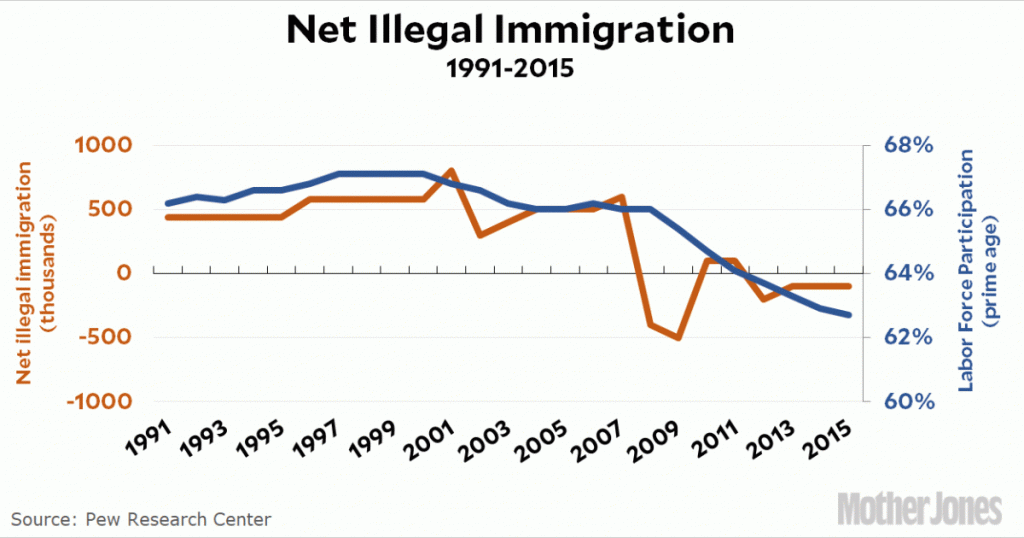Is Illegal Immigration Responsible for the Decline in Labor Force Participation?
Looking for news you can trust?Subscribe to our free newsletters.
Why are prime-age men dropping out of the labor force? And what can we do about it? A few days ago the Two Jasons tackled this question and came up with very different answers. Here is Jason Richwine criticizing Jason Furman:
How about restricting low-skill immigration to encourage recruitment of Americans? No, Furman says, because — well, actually, he does not mention immigration at all, not even to dismiss its importance. Omitting the i-word in discussions of labor-force dropout is an unfortunate habit on both the left and the right. Amy Wax and I wrote our Inquirer op-ed (based on a much longer essay in American Affairs) to show that employers turned to immigrants as the native work ethic declined. As evidence, we point both to the much higher labor-force participation of low-skill immigrants compared to low-skill natives, as well as to the near-universal preference expressed by employers for immigrant labor. Restricting the flow of foreign workers would generate a major incentive for business owners, politicians, and opinion leaders to reintegrate American men into the labor force. It is, in our opinion, a crucial part of any reform strategy.
I don’t have a huge dog in this fight since, by lefty standards anyway, I’m pretty open to policies that humanely restrict illegal immigration. But I have a couple of questions for Jason R that I’m genuinely interested in. First, there’s this:
Labor force participation of women rose steadily starting with the feminist revolution of the 60s. However, participation peaked in the late 90s and has been declining ever since. In other words, for the past couple of decades this is a problem that’s not restricted just to men. Is illegal immigration affecting the labor force participation of women the same way?
Second, if illegal immigration really is a factor, then labor force participation of native workers should be correlated with the amount of illegal immigration. But it doesn’t seem to be:
I don’t want to make too much of this, since the Great Recession obviously had a big impact on both illegal immigration rates and labor force participation. Still, overall labor participation turned down in 2000 and then turned down even more in 2009. But illegal immigration rates didn’t change in 2000, and they changed in the wrong direction in 2009. Lower immigration rates should have increased labor force participation. What’s more, labor force participation among men has been dropping steadily since the 60s, with the rate hardly changing at all even as illegal immigration has spiked up and down.
There are so many other, bigger factors that affect labor force participation that I don’t really expect much from this comparison. But I’d expect at least a glimmer of something if unauthorized workers from Mexico really are causing native workers to just give up on the job market. Why don’t we see anything?





